Essential Hebrew

First Steps in Learning Hebrew - Part II
A fun way for children to gain skills in reading, speaking and understanding Hebrew
SIMON SAYS
Learn the Words then Play the Game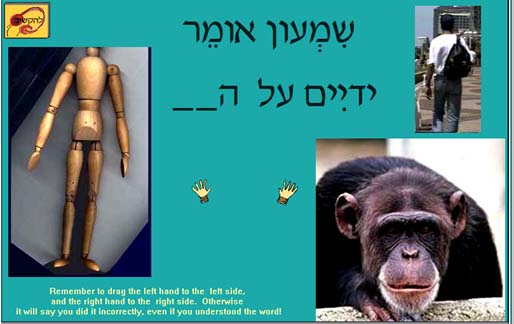
-
Kids love to play the game "Simon Says". The Hebrew words for parts of the body - arms, legs, head, etc are taught.
-
Follow Simon's directions and drag the hands (on the screen) in response to his commands.
-
Both singular and plural forms of the words are taught.
-
The vocabulary is divided into easily learned groups, with a game after each group.
Fine Tuning Your Reading Skills
-
Reading Practice: Reading Syllables
-
ח or ע - at the end of a word
-
The snake detective 1.17 נחש בלש gives more reading clues, focusing on common problem areas.
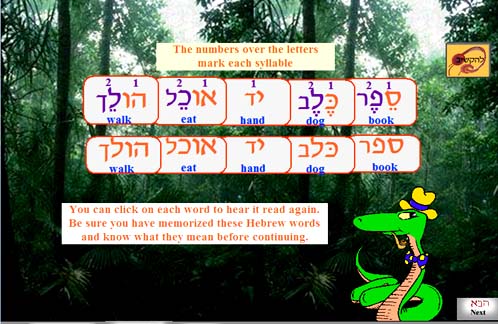
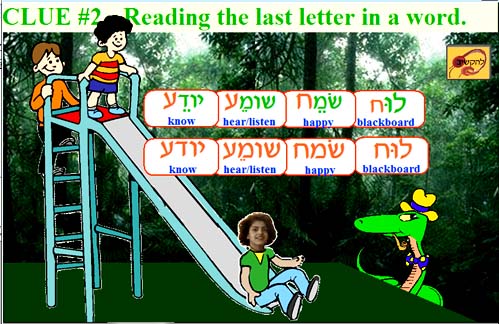
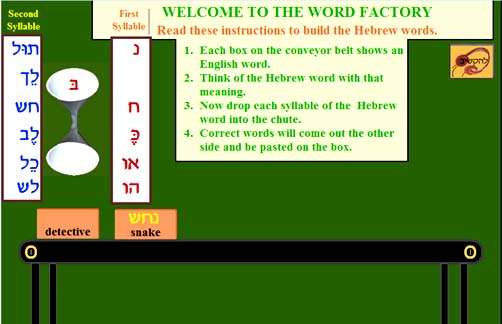
Game: Building Words by Syllables
Play a game where you build words by syllables and send them down the conveyor belt at the factory.
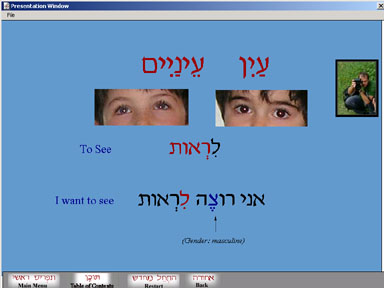 Simple
Sentences in Hebrew
Simple
Sentences in Hebrew-
You know the Hebrew words for parts of the body. Now start to build simple sentences with action words such as "see", "eat", "hear" .
-
Begin to add pronouns to your sentences.
-
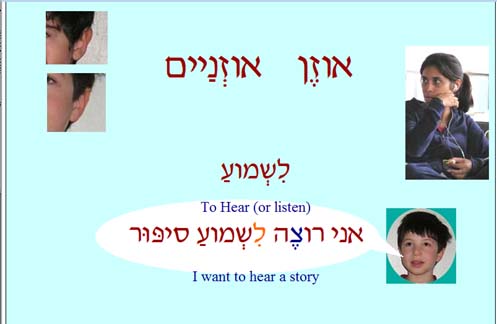
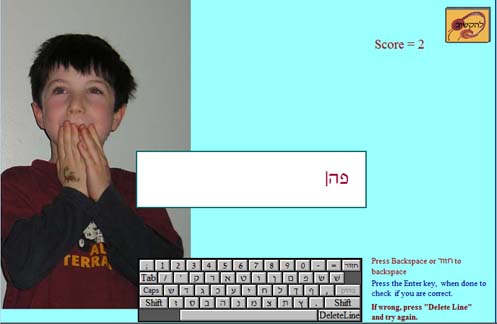
Drill: Students are asked to type in the Hebrew words for the body parts they have learned.
This is a scored exercise. Choose your level of expertise.
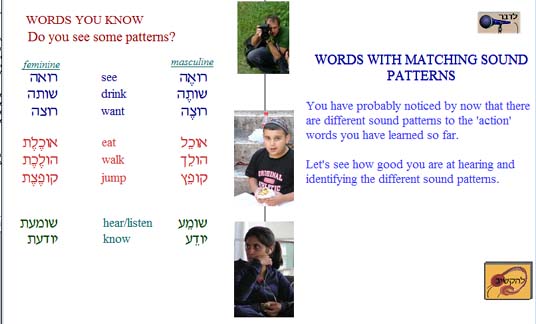
Words You Know:
Do you see some patterns?
Become familiar with verb patterns rather than learning each word as a vocabulary item.
-
Notice the vowel patterns as the words are pronounced.
-
Recognize what vowels, as well as the vowel order that words in a particular verb pattern have in common.
Play the scored games
Match sounds to identify verbs of the same pattern.
-
Self-paced lessons provide immediate positive feedback.
-
Vocabulary and concepts learned from the software "First Steps in Learning Hebrew" are integrated into these lessons.
-
Audio Recording Program so you can record and listen to yourself speaking Hebrew.
Printable materials for use in the classroom
-
Printable pages for classroom flashcards each have a colored picture with an accompanying Hebrew word. Pages should be folded in half to make the flashcard.
-
Printable drills can be used in the classroom. Drills have pictures with accompanying text. Students can draw lines to match word to picture, fill in the blank, or write in the missing word as appropriate. The text accompanying the pictures can be modified by the teacher to fit curriculum needs.
-
Teachers are welcome to change the text found under the pictures to meet their own curricular needs.
-
Choose from the following file formats: Davka WriterTM , Adobe Acrobat or html.
Cost: $20.00
Contact: Dr. Jonathan Paradise
support@essentialhebrew.com